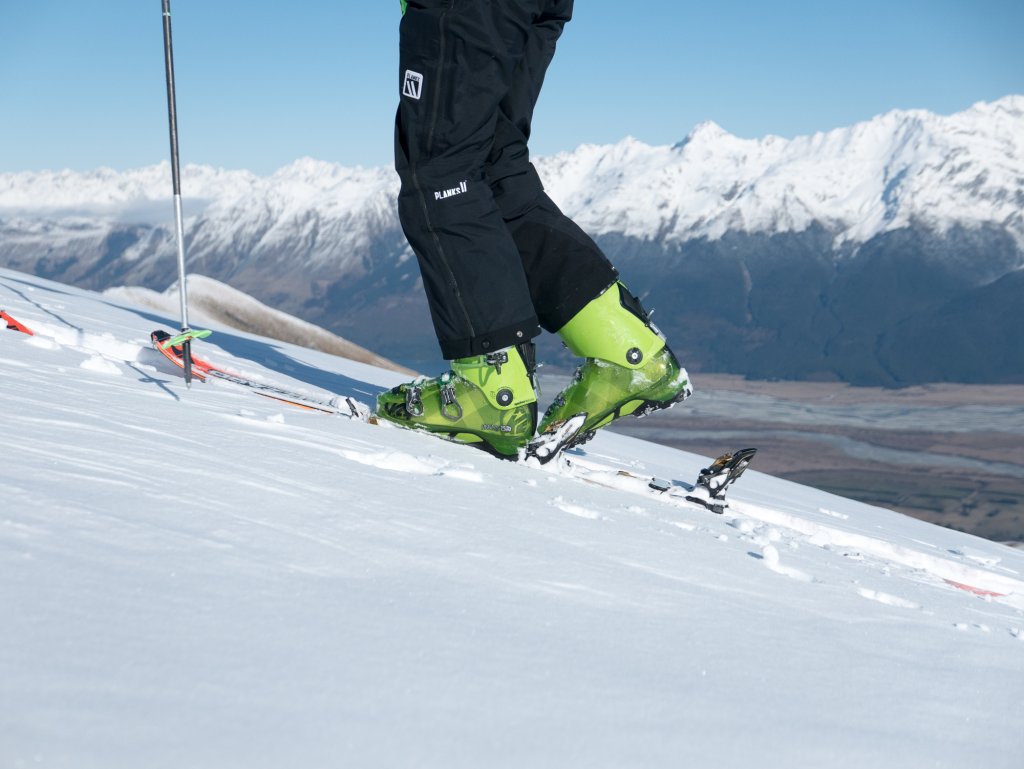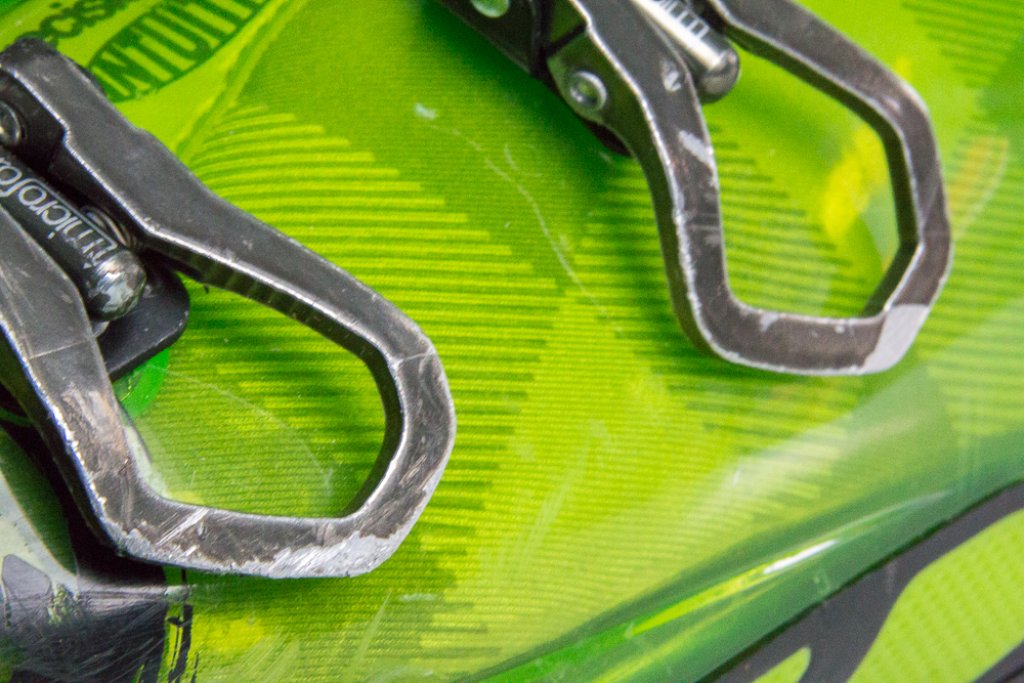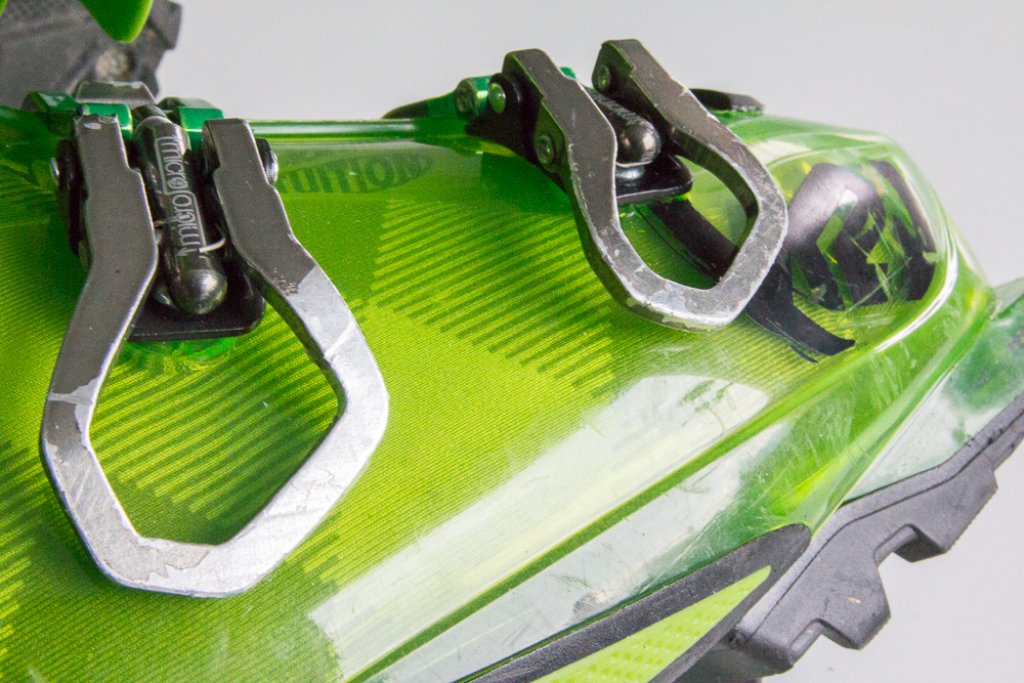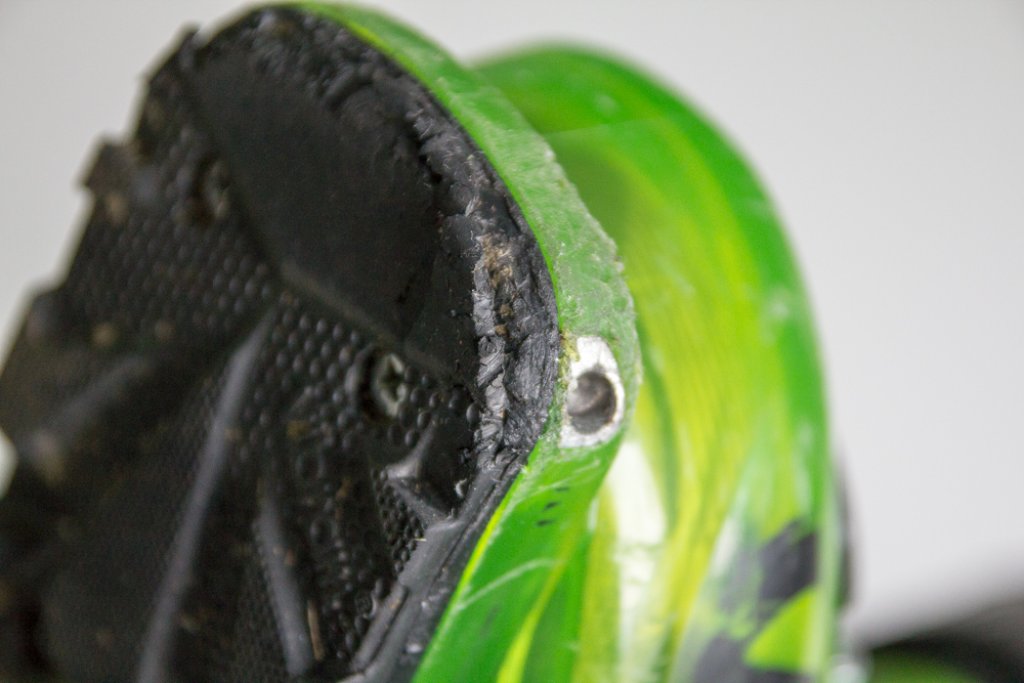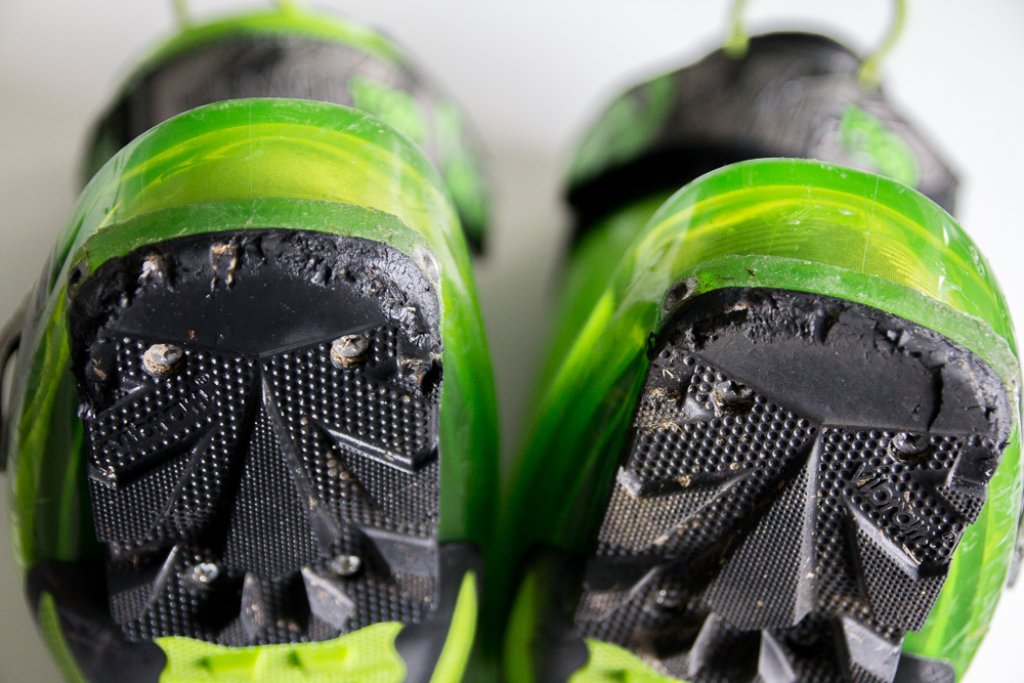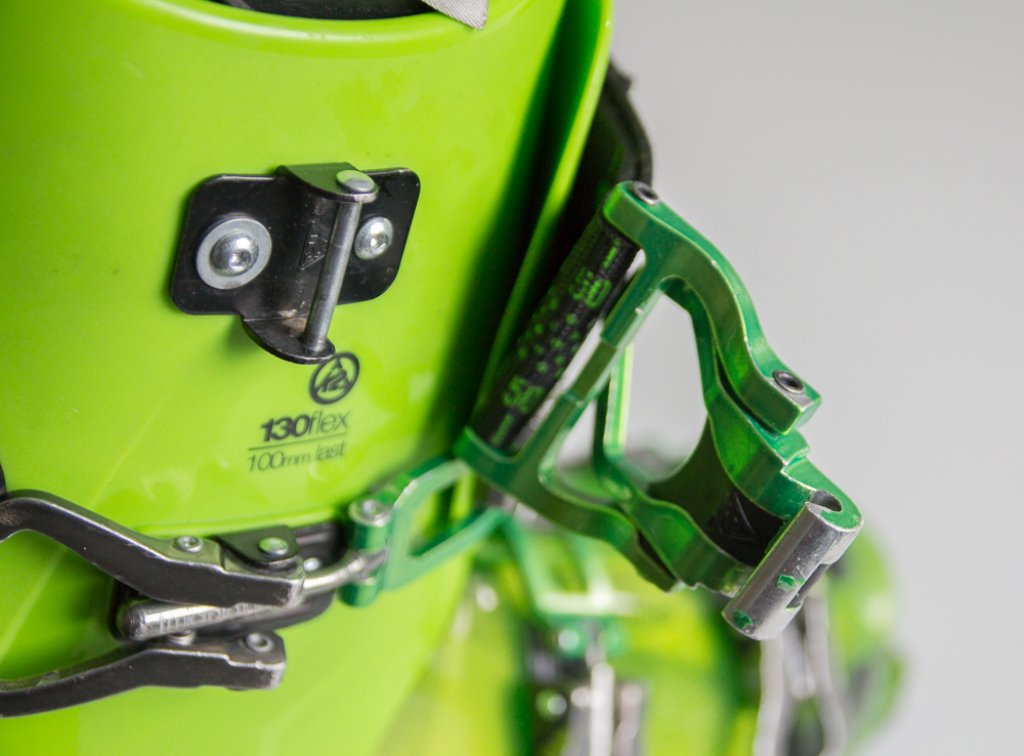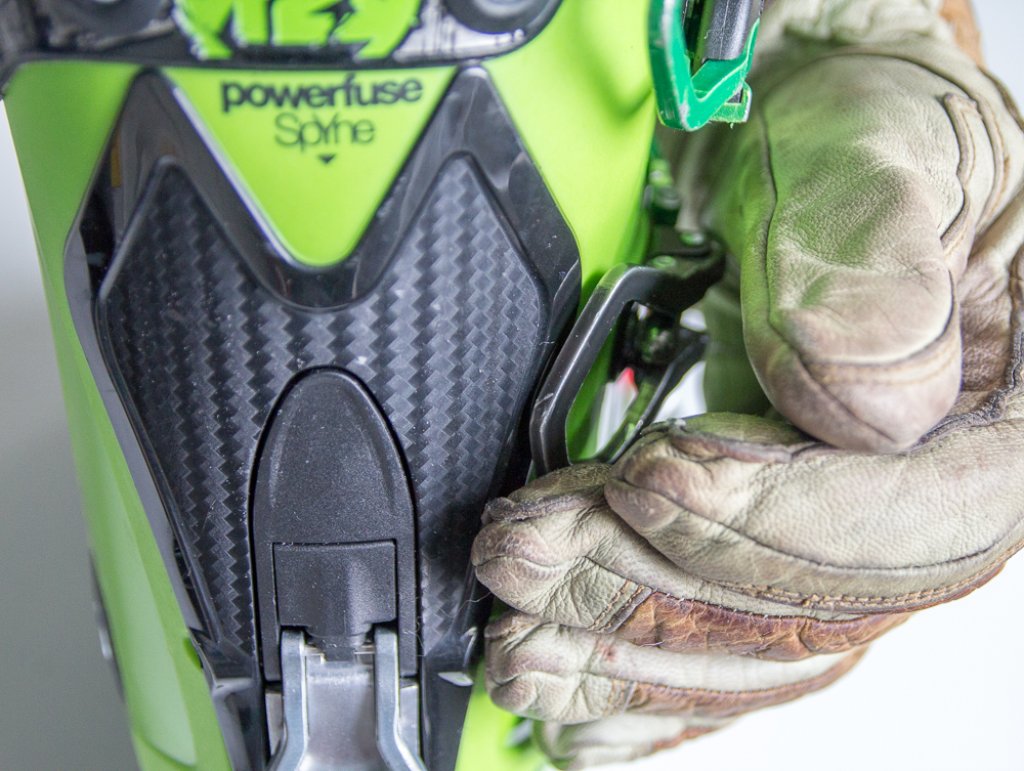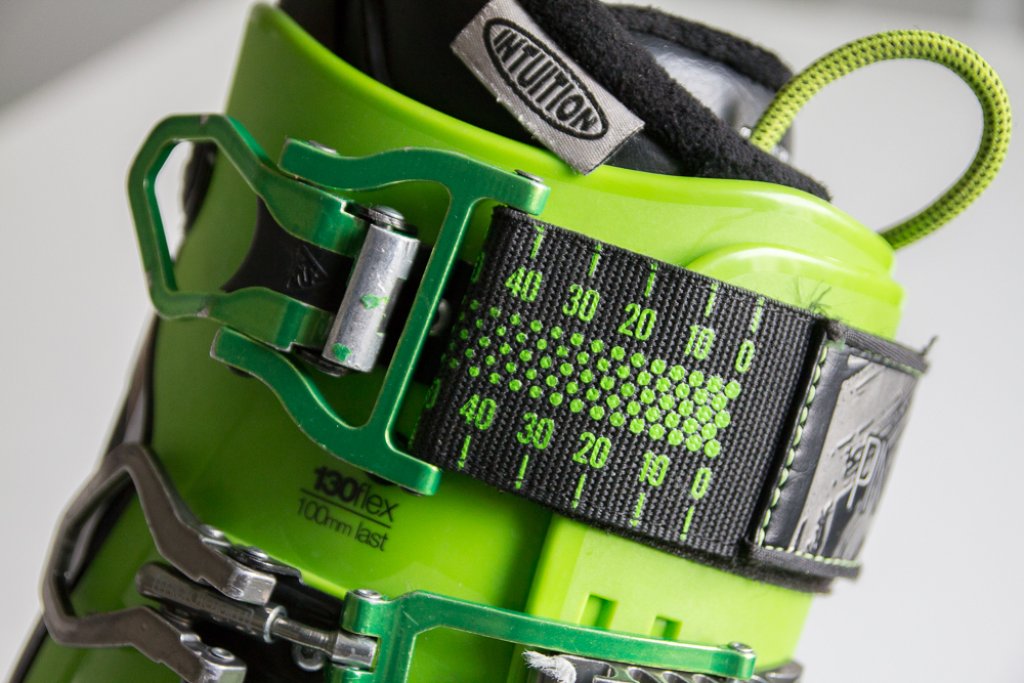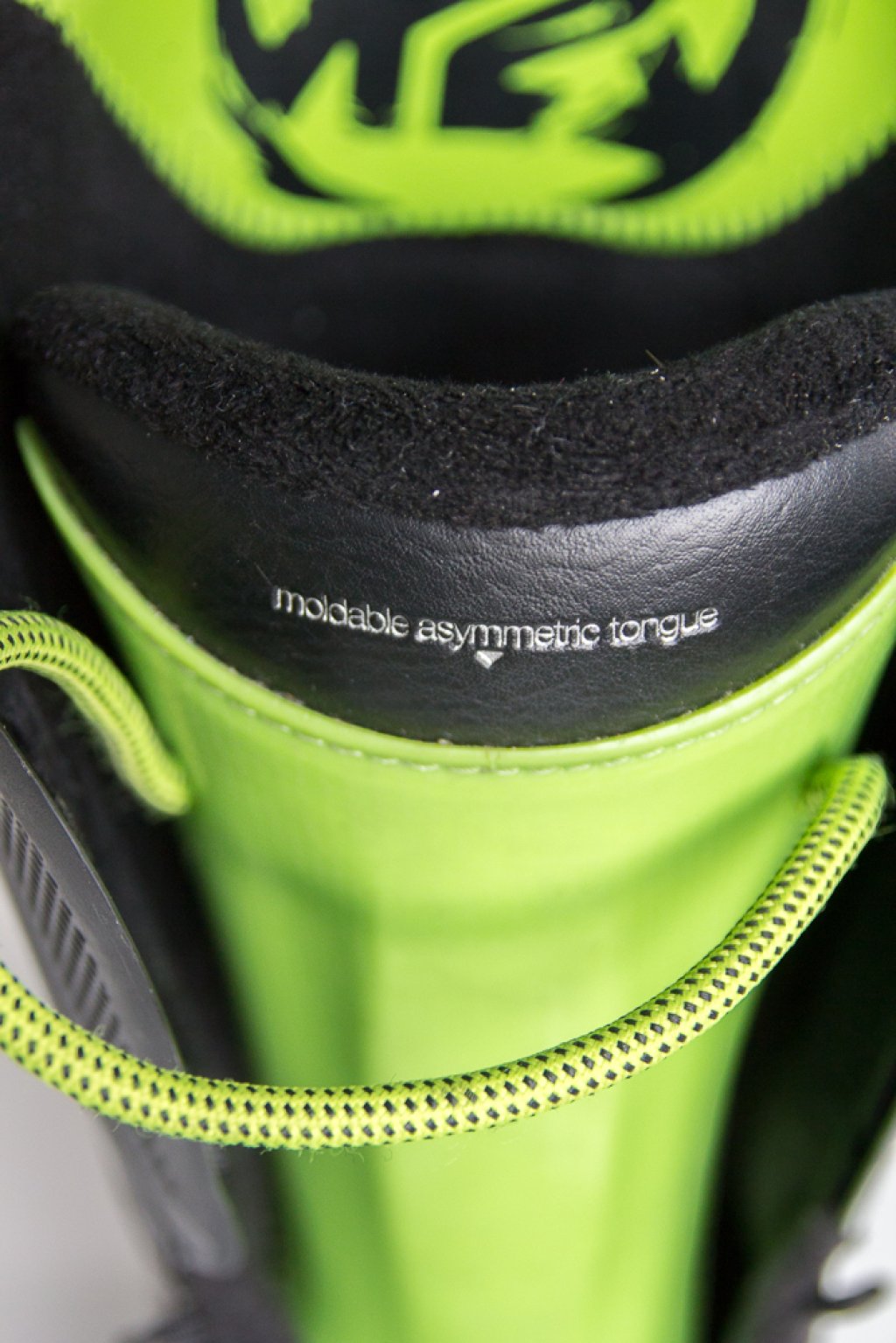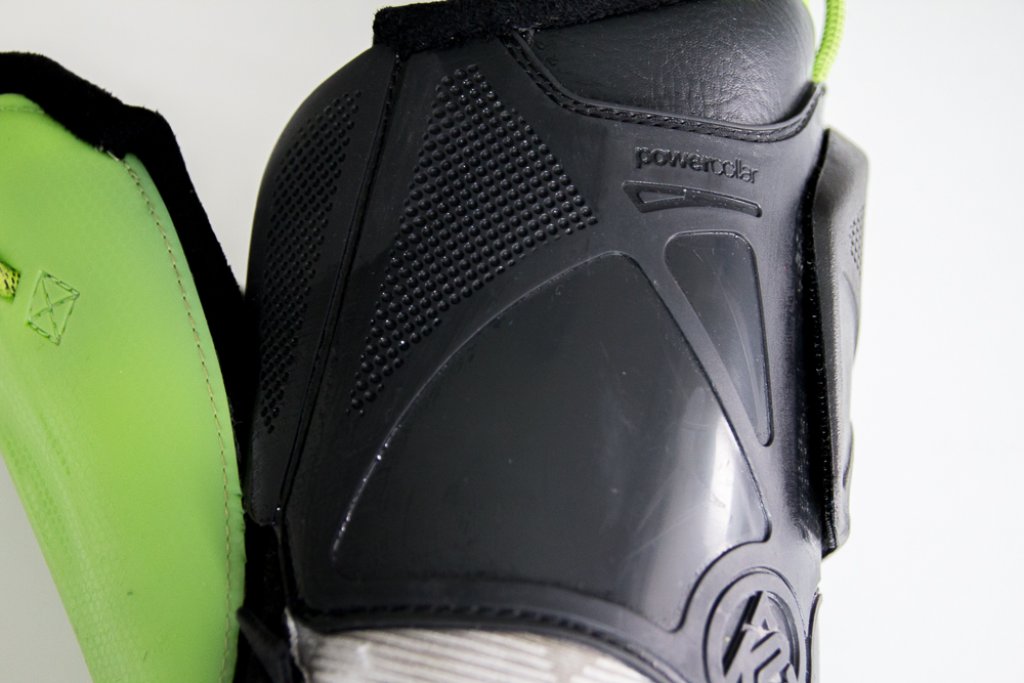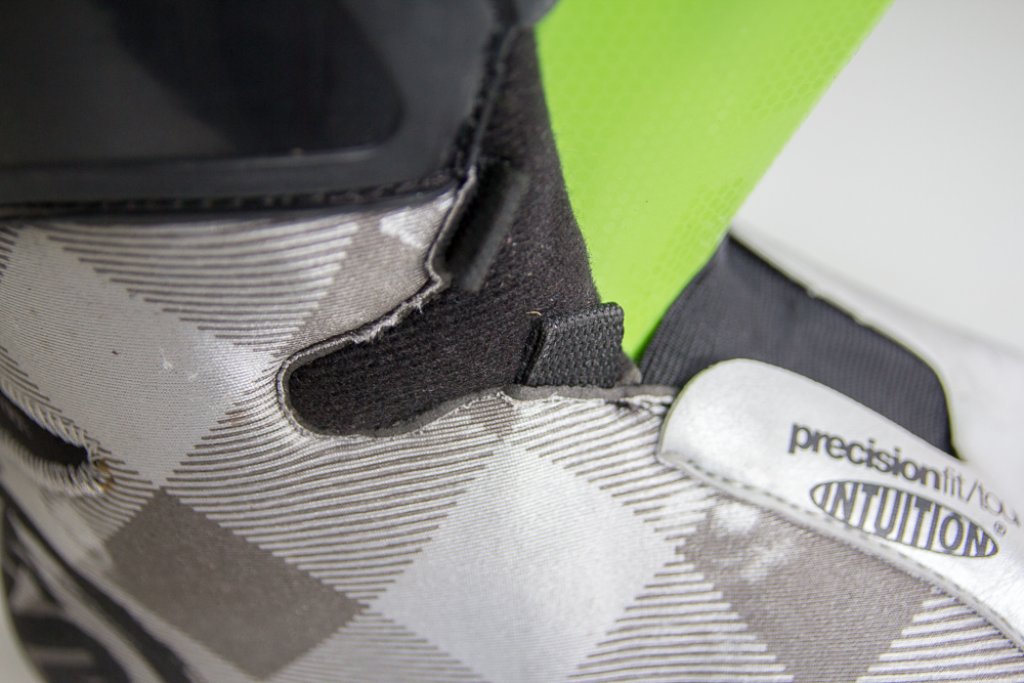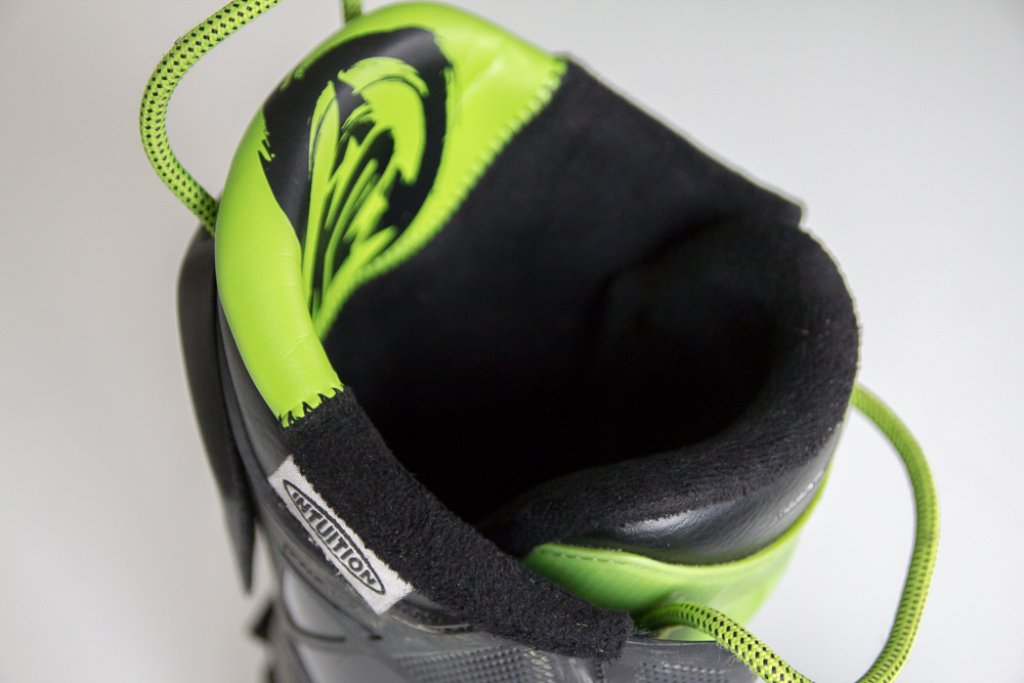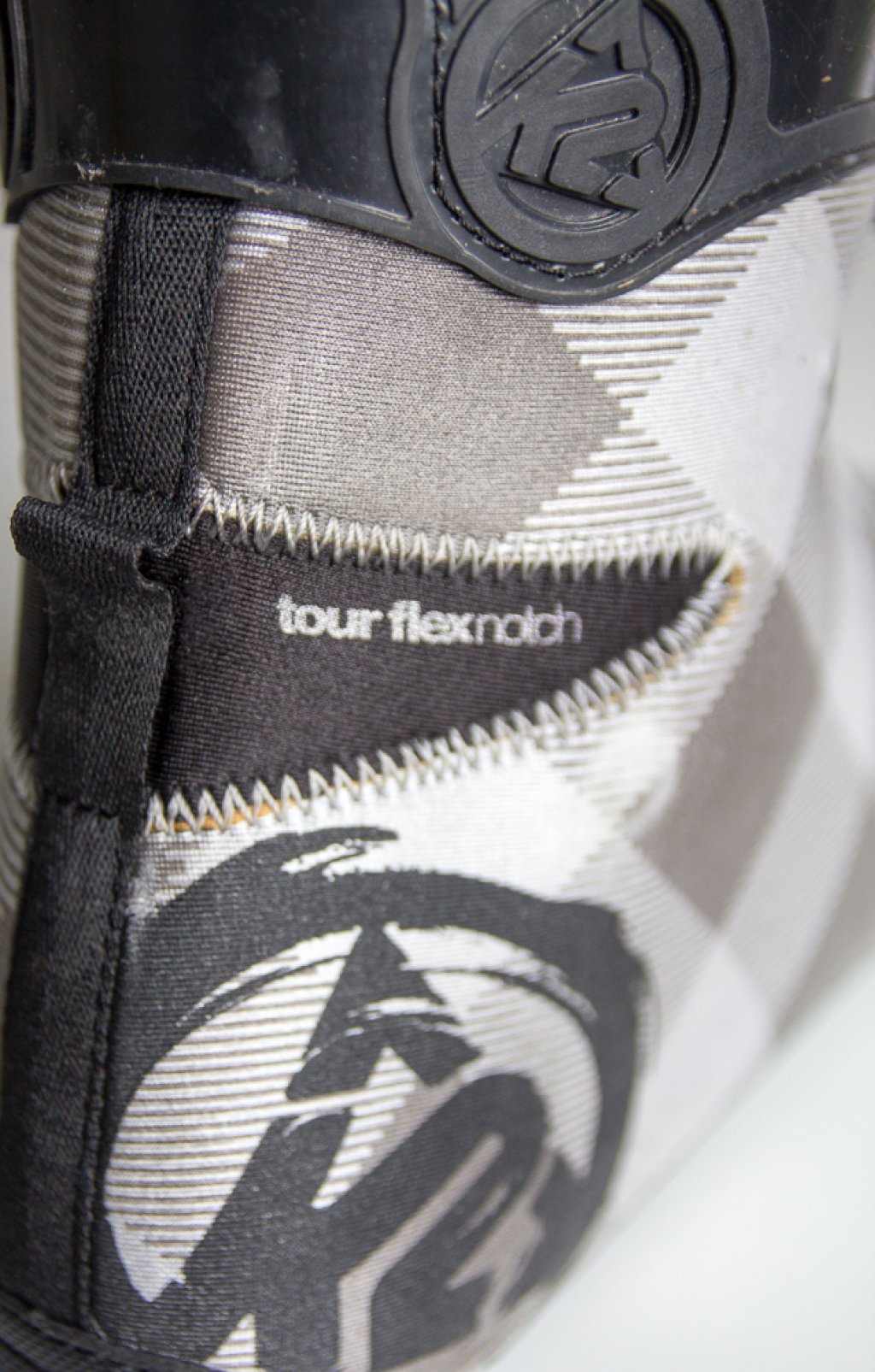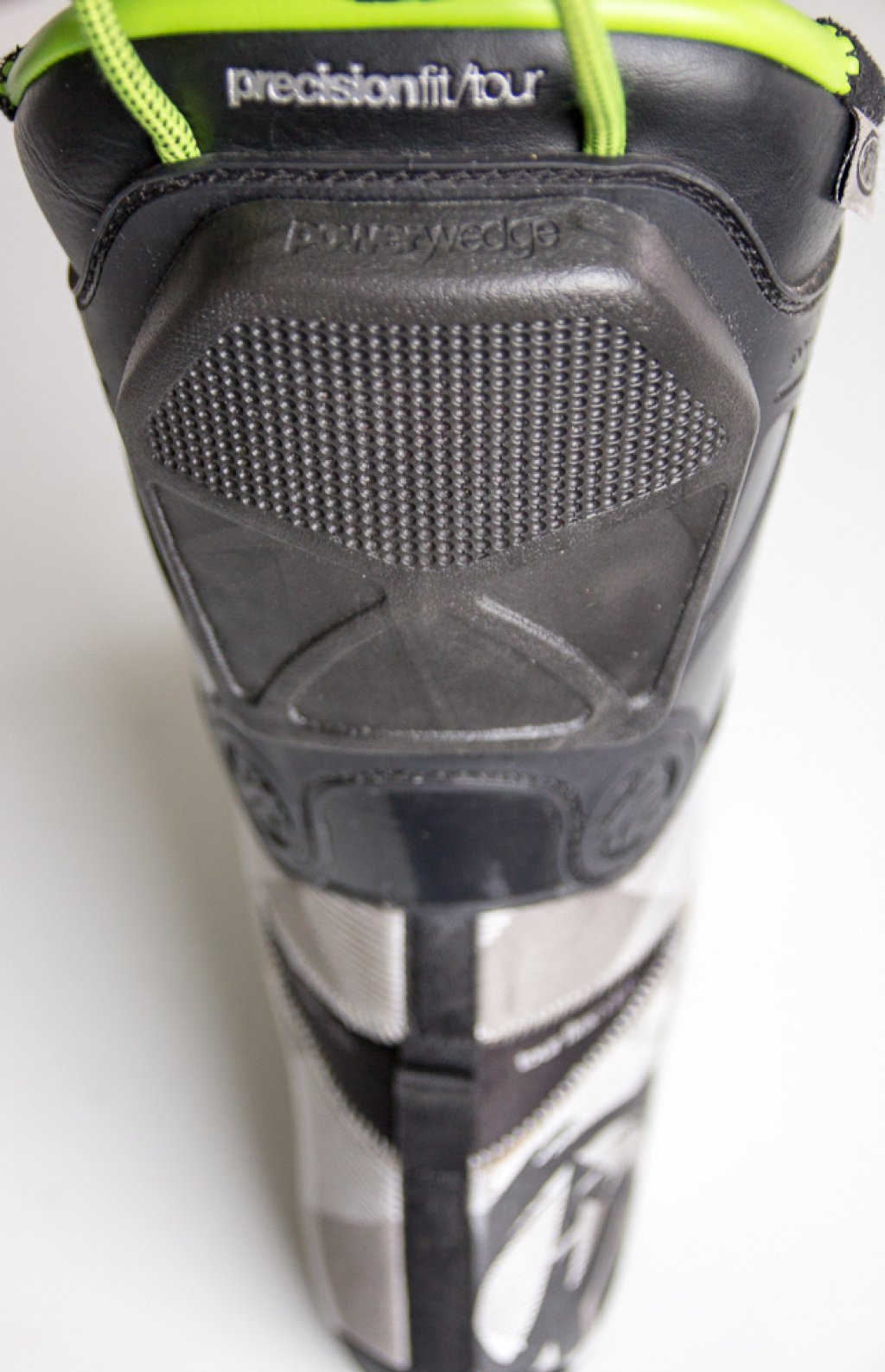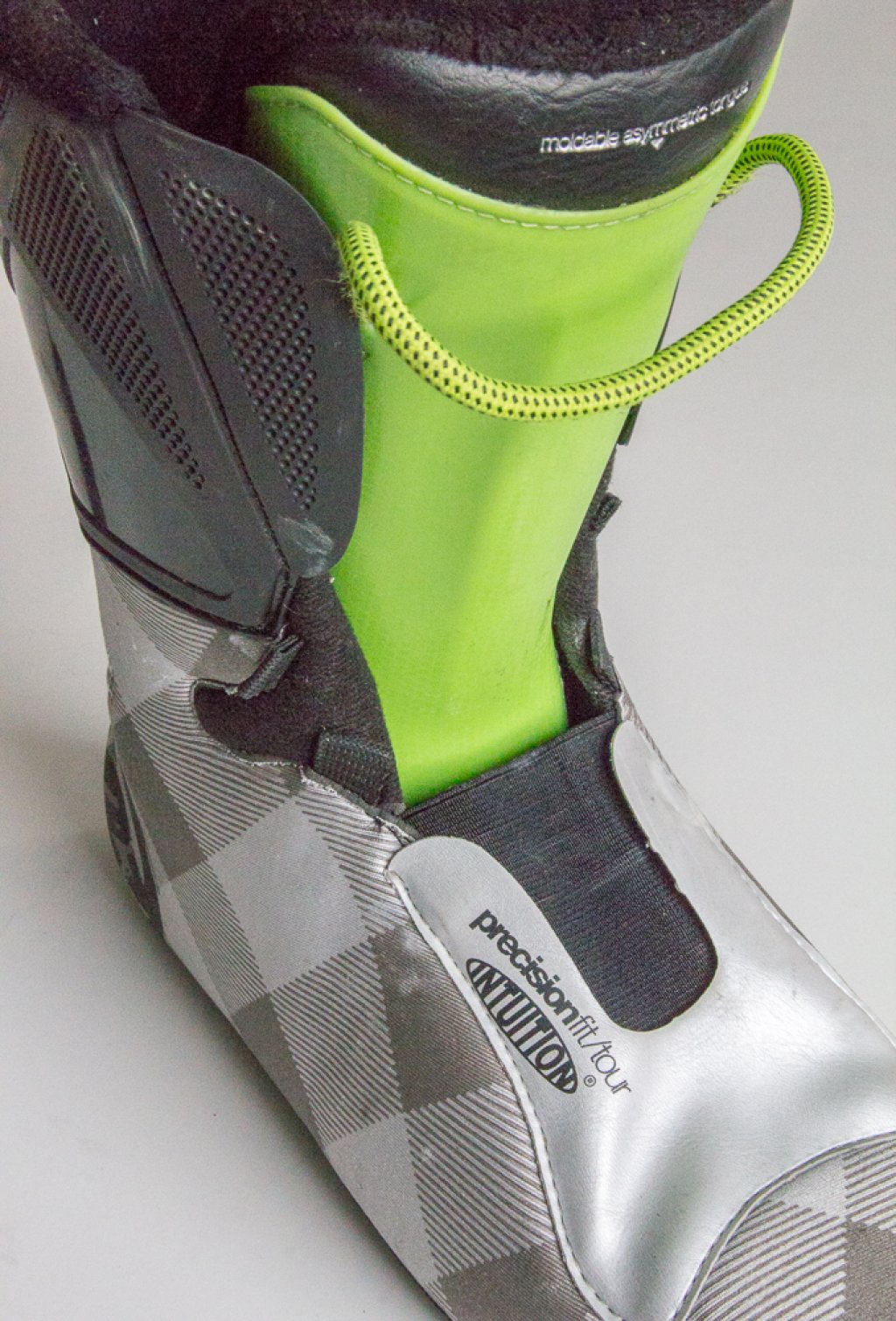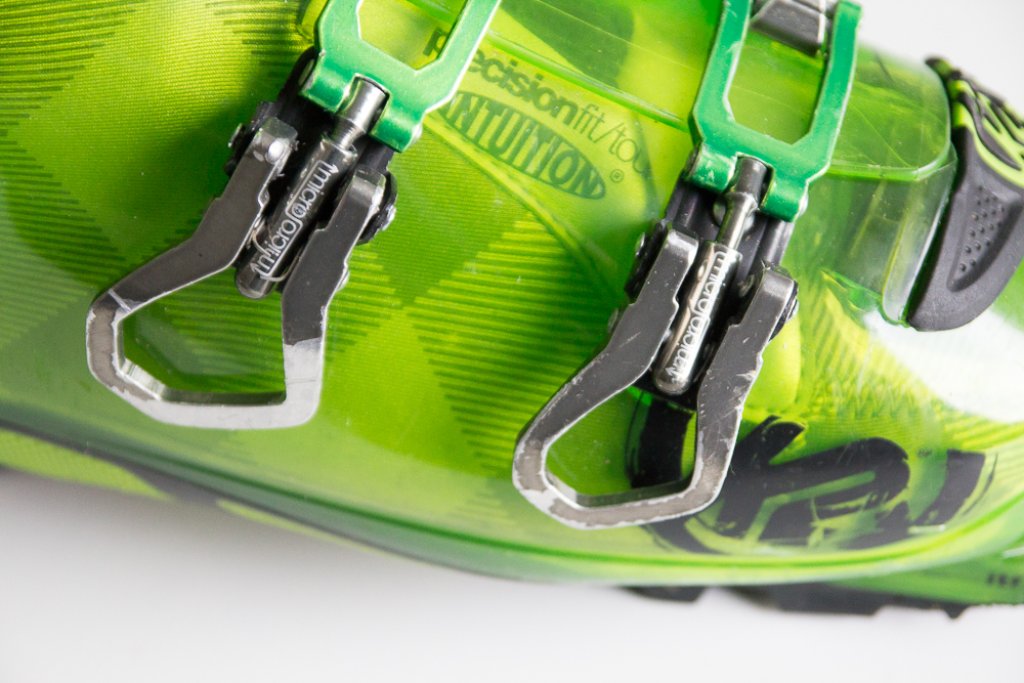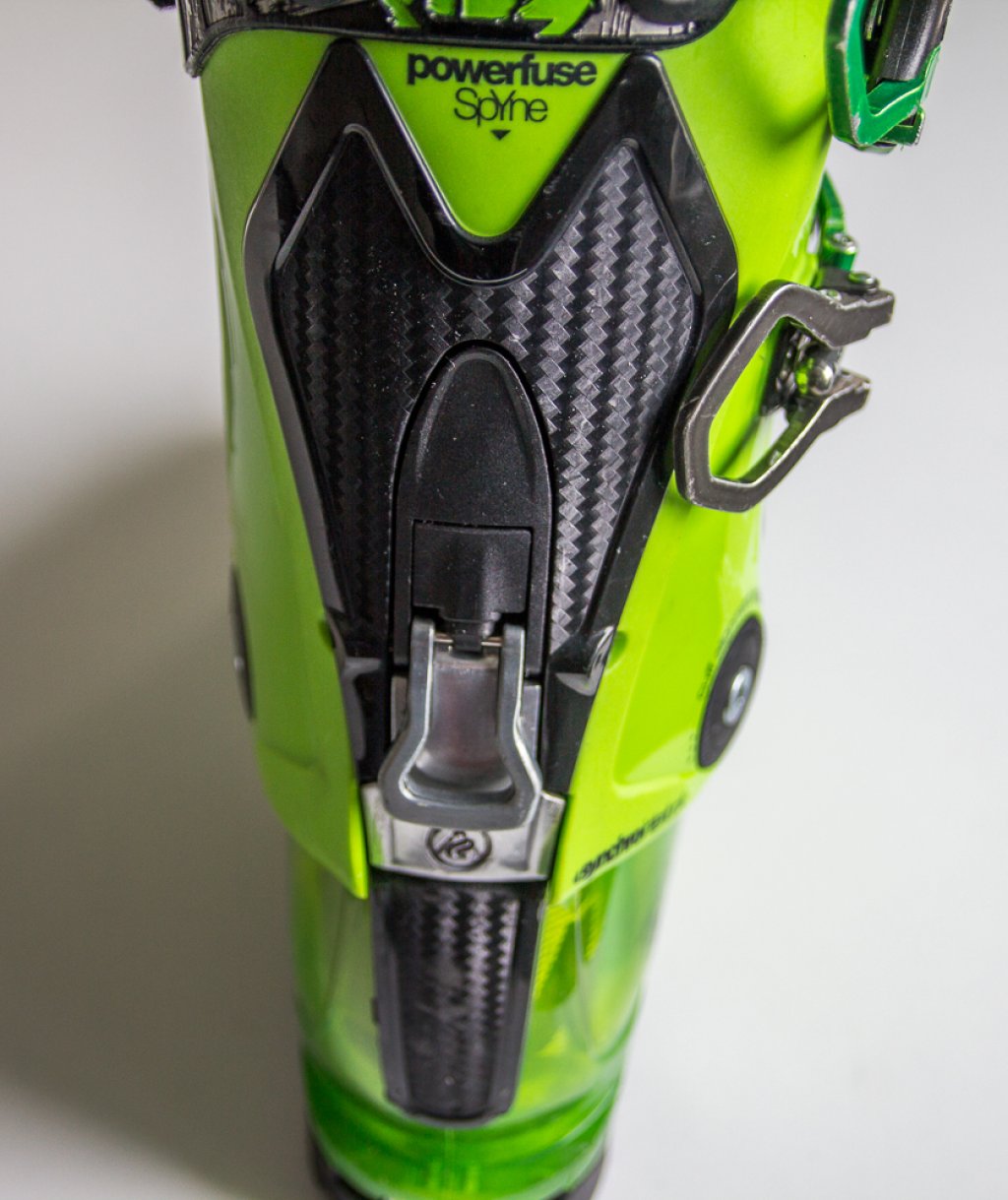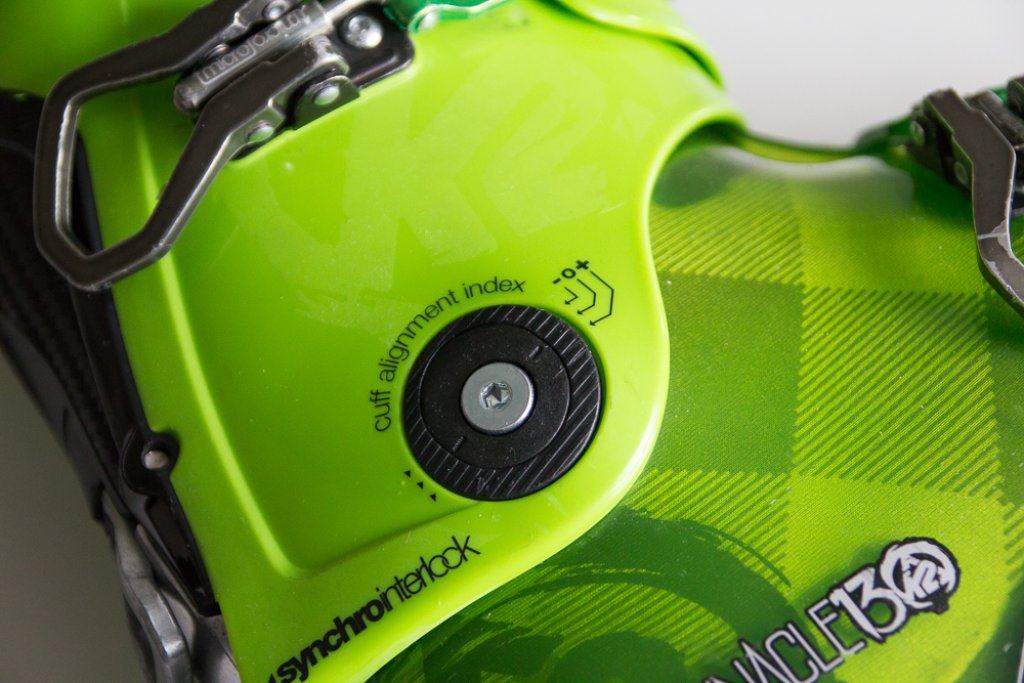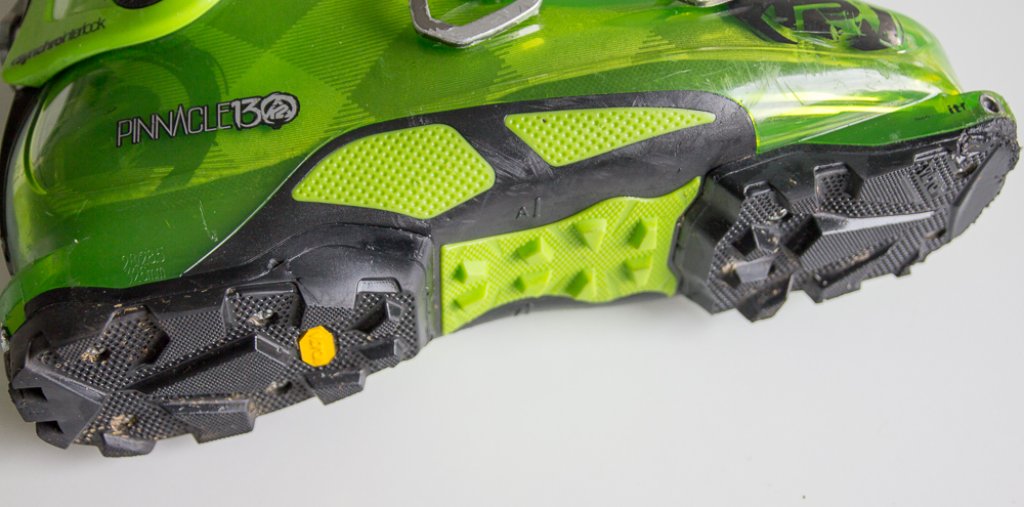Like many freeride boots, the Pinnacle 130 from K2 offers walking function combined with a stiff flex. The top model in the K2 freeride series also has tech inserts built directly into the shell and can be fitted with alpine and touring soles. With different last widths and the high-quality INTUITION liner, it is also possible to adapt the boot to individual foot shapes.
Test conditions:
The 14/15 season boot was tested for a total of just over 30 days in spring 2015 in the European Alps and in summer 2015 in New Zealand. The tester is a sporty rider weighing approx. 80 kg. The boot was tested with Marker Tour and Kingpin bindings on K2 Pinnacle 118 and Blizzard Zero G 108 skis in spring to high winter conditions.
The first impression
When you take the Pinnacle 130 out of the box for the first time, the poison green, transparent shell immediately catches the eye. This immediately reveals the Intuition liner. The fourth buckle, which is combined with the strap, is also striking. When you first try them on, you immediately feel comfortable in the inner shoe. It is relatively thick and therefore soft and warm. The inner boot is already thermally adapted to the shell and so the whole boot feels very comfortable straight away. The switch for the walking mode on the back is easy to reach and can also be operated with gloves. Unfortunately, in ski mode you immediately notice that the walking mechanism has a bit of play and you have to push briefly into the void before you feel the flex of the boot (more on this below), then the flex of the boot is pleasant and fluid, but feels soft for the manufacturer's specification of 130. In walk mode, the mobility in the shaft is relatively low. This improves with the fourth buckle/strap open, but even then it is hardly greater than 25 degrees (not measured).
The liner
The good and comfortable fit of the liner is certainly one of its best features. On the test model, the fit was good enough right from the start to dispense with the option of thermal adjustment. In addition, the Intuition Liner offers further features that should give the boot not only a high level of comfort but also good downhill performance. A spoiler (power wedge) can be placed anywhere on a Velcro surface on the calf, allowing you to adjust the template of the boot. Of course, this only changes the template inside the shell, which is not to be confused with an adjustable template on the shell itself. The tongue is reinforced with thermoformable plastic to prevent pressure points when pressure is applied to the front. Reinforcements are also integrated on the sides at shin level, which should improve power transmission. For better mobility, a flexible area is integrated in the Achilles tendon area, which is intended to increase mobility in touring mode.
Shell, interchangeable soles and adjustment options
In the calf area, the so-called "PowerFuse SpYne" reinforces the shell, which is intended to achieve greater torsional rigidity. The most important feature of the K2 Pinnacle 130 is certainly the tech inserts integrated into the shell. Compared to many other freeride boots, these are molded directly into the shell and not integrated into the removable soles. This not only creates more confidence, but also offers significant advantages with various new binding systems. For example, if you use the boot with a cast touring setup (the toe piece of an alpine binding is swapped for a tech toe piece on the ascent), you can rely on the advantages of the combination of alpine soles in an alpine binding in downhill mode (gliding surfaces of boot and binding on top of each other). With the KingPin binding, the boot cannot yet fully exploit this advantage. While the above applies to the rear jaw, there is a problem with the front jaw: If you use the boot with alpine soles in the Kingpin, the sole does not rest on the binding (because the alpine soles are thinner than the touring soles) and the boot is only connected to the binding at the pins, which works neither on the ascent nor on the descent. The interchangeable touring soles are equipped with a Vibram sole and can be exchanged using four screws at the front and back.
The alignment of the cuff, i.e. the angle between the upper and lower part of the ski boot (cuff alignment, often incorrectly referred to as canting), can be adjusted on the shell. The buckles are designed as micro buckles with an adjustment option.
Practical tests
The comfortable fit of the boot is also immediately noticeable in practice. There are no pressure points or other discomfort to be felt either on the ascent or descent. On the descent, the boot is pleasing and the flex works smoothly. As with the first impression, the flex feels soft for a boot with a manufacturer's specification of 130. Especially with long and wide skis, the boot was not stiff enough for me to transfer the necessary power, which would be necessary on uneven and hard ground, for example. The Pinnacle 130 is particularly soft in the forward bend of the foot. This is particularly unpleasant when landing with a little forward lean, because the feedback from the boat is particularly lacking here and you tend to roll over forwards as a result. The manufacturer gave us the following feedback on this point: "The flex is harder compared to competitors" . We have no way of objectively evaluating this feedback (measurement or similar), based on (subjective) experience with many other models, we do not share the manufacturer's opinion on this point.
The high weight of the boot is noticeable on the ascent. According to the manufacturer, this is due to the customizable material of the shell and the focus on downhill performance. Despite this, almost 5 kg per pair for ascents of more than 1000 m is a challenge even for fitness enthusiasts and compared to similar models from the competition, you are carrying almost a kilogram more weight up the mountain. The walking mechanism with the fourth buckle/strap open is sufficient for short ascents. With the fourth buckle/strap closed, it is very small and it can happen that you only realize after the line that you have just ploughed through the terrain in walking mode. As already mentioned in the first impression, the walking function buckle has so much play that you notice it clearly when you lean forward. This is particularly noticeable when changing the load from back to front due to a certain dead zone in which you first fall forward without resistance and then abruptly feel the flex of the boot. This is particularly annoying, but also puts a lot of mechanical strain on the walking mechanism. We have also heard of walking functions being torn off. We have received the following feedback from the manufacturer: "However, every walkmode needs some play to be able to close correctly, but this has been optimized again in the current shoes." and "The material hardness of the catch (metal part of the Synchro-Interlock) has been
significantly increased again in the current Pinnacle models."
The buckles are mechanically well designed and close well. With thicker gloves, however, they are difficult or impossible to open because you simply cannot get between the shell and buckle to push the buckle forward to open it.
Long-term gear review
The K2 Pinnacle 130 does not noticeably lose performance in the long-term gear review. Functionally, there are also no signs of wear on the boot, only the coating on the buckles began to wear off over a large area after a while. The signs of wear on the touring interchangeable soles were much more pronounced: These were already very badly worn after 10 days in the terrain. According to the manufacturer, however, these were samples and the hardness of the currently delivered soles is significantly higher.
The combination with the strap on the fourth buckle has unfortunately not proven itself in practice. Although, as intended, the open fourth buckle significantly increases the rotation angle in the shaft when climbing, unfortunately the strap is then only loosely connected to the shell via the buckle and often detaches from it, leaving the fourth buckle dangling on the strap between the legs. At best, this is annoying and simply gets in the way. At worst, you can trip over the detached strap and fall when hiking, for example. If you don't continue to use this function, you have to be satisfied with a very small rotation angle in walk mode.
Conclusion
The concept of a downhill-oriented freeride boot with tech inserts integrated into the shell would be convincing, but unfortunately K2's implementation of the concept in the form of the Pinnacle 130 has many weaknesses. Although the comfortable inner boot was convincing in the test, the weight/stiffness ratio and the weaknesses in the ascent performance as well as the shortcomings of the walking mechanism clearly cloud the overall impression. For someone looking for a comfortable boot for maximum short ascents or a good addition to their Cast Touring System, the Pinnacle is an option.
Information
- RRP €529.95
- Weight: 4.99 kg with alpine sole (for size 28.5)
- Flex: 130 (manufacturer's specification)
- Sizes: 25.5 - 30.5 (in whole steps)
- Last widths: 97 mm and 100 mm
Shell:
- Fourth buckle integrated into the wide strap
- Tech inserts integrated directly into the shell
- Interchangeable sole: DIN soles and Vibram touring soles
- Profile in the midfoot area between the interchangeable sole parts
- PowerFuse SpYne reinforcement on the calf
- Adjustable calf alignment
Innersole:
- Thermo-adjustable INTUITION liner
- Removable power wedge in the calf area to adjust the template
- Thermo-moldable asymmetrical tongue
- Lacing is possible
Here is the the manufacturer's website with further information, here you can order the boot from our partner store Bergzeit.de.
